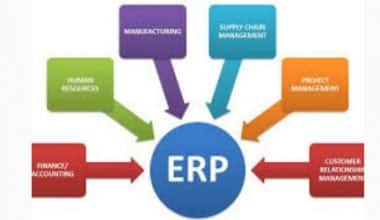Cash management is one of the most crucial components of running a business, and it may determine whether or not you succeed in any field. Excess debt and even bankruptcy can result from poor financial management or a lack of free cash flow.
The spate of corporate bankruptcies caused by various economic downturns has demonstrated the importance of corporations maintaining adequate cash reserves.
On the other side, being overly cautious and storing cash diminishes the efficiency of that cash and can stifle future investment and growth opportunities.
In this article, we’ll explain what cash flow is, and how to read a cash flow statement. Then we’ll get into the details of managing cash flow, and a lot more.
What is Cash Flow?
Cash flow is a measurement of how much money gets in and out of your company over a given period of time. When your cash flow is positive, you have more money coming in than going out, allowing you to pay your bills and cover extra obligations. You can’t afford to make those payments if your cash flow is negative. Working capital is the concept of having “enough money to meet your financial responsibilities.”
A company generates revenue through sales and spends money on costs. A firm may also earn money from interest, investments, royalties, and licensing agreements, as well as sell things on credit with the expectation of receiving the money owed later.
One of the most essential objectives of financial reporting is to assess the amounts, timing, and uncertainty of cash flows, as well as where they originate and where they go. It is necessary for evaluating a company’s liquidity, flexibility, and overall financial success.
Positive cash flow implies that a company’s liquid assets are growing, allowing it to meet obligations, reinvest in its business, return money to shareholders, pay bills, and offer a cushion against potential financial difficulties. Profitable investments can be taken advantage of by companies with high financial flexibility. They also do better during economic downturns because they avoid the consequences of financial distress.
The cash flow statement is a basic financial statement that shows how a company gets and spends cash over a certain period of time. It can be used to look at cash flows.
Also read: Cash Flow Forecasting: Meaning, Methods, Tools, Models (+ Detailed Templates)
Cash Flow Management Definition
The process of tracking how much money comes in and out of your business is known as cash flow management.
This allows you to forecast how much money your company will have in the future. It also aids in determining how much money your company requires to cover debts such as paying staff and suppliers.
The word “cash flow” refers to variations in the amount of money in your firm from one point to the next. Cash flow management is the process of monitoring and analyzing this flow. This allows you to notice trends, plan for the future, and address any cash flow issues.
Cash flow management should be done regularly to make sure that your business has enough money to run.
What are Cash Flow Statement Methods
The direct technique presents operating cash flows as a list of incoming and departing cash flows. The direct technique works by subtracting the money you spend from the money you receive. The indirect technique shows operating cash flows as a reconciliation of profit to cash flow.
What are the Types of Cash Flows?
They include:
- Operating cash flow.
- Investing cash flow.
- Financing cash flow.
Cash Flow Management Importance
Profits and income are often the primary emphases of enterprises, as they are required to operate. Cash flow, on the other hand, provides a far more relevant picture of your company’s financial health.
Let’s imagine your company’s income just increased, but the amount in your business bank account is steadily decreasing. If you’re simply concerned with the profits, you can assume you’re doing well, only to discover that your bank account has been exhausted.
You can tell if your company is in the black or the green by looking at its entire net cash flow. Cash flow is useful for investing in and growing your organization in addition to displaying your financial performance.
If your cash flow is positive, you most likely have adequate working capital. You can use that money to hire new personnel, hire a marketing or advertising agency, pay off debts, and purchase new equipment. Cash flow is, in the end, the lifeblood of your business.
How to Manage Cash Flow
As a business owner, you may utilize a variety of tools and resources to manage your cash flow and ensure that you have enough money to meet your obligations.
The first stage is to make a budget, which you may use to figure out your monthly income and expenses, as well as how much you might earn or spend in the future.
To better understand if you have a positive or negative cash flow, you might design and use a cash flow statement (free templates are available online).
When you have more money coming into your firm than going out, you have positive cash flow.
When more money leaves your business than comes in, you have negative cash flow. Negative cash flow may indicate that you will have problems covering future spending.
If you run a seasonal business, managing cash flow can be especially difficult. You generate the majority of your money in a short period of time, but you must work out how to pay your basic expenses throughout the year, as well as any additional expenses before and during your busy season. Even with a year-round business, though, getting everything totally up can be difficult.
Cash flow management can be aided by finding ways to get paid faster and deferring payments to others. Having cash on hand, whether through savings or a loan, can also help you get through tough times. Also read CASH FLOW: All you need to know, Simplified!!! (+ Free format)
What are the Components of Cash Flow Management?
Cash obtained from accounts receivable, cash paid for accounts payable, cash paid for investing, and cash paid for financing are all included. The cash flow statement’s bottom line shows how much cash a company has on hand.
Cash Flow Management Tools
Here are tools to help manage your business’s cash flow:
- Invoice financing
- Build your savings
- Invoice factoring
- Increase revenue and lower expenses
- Open a credit line
- Customers should be given a discount if they pay their bills early.
#1. Invoice financing
If you owe money to other companies, you may be able to take out a loan or obtain a line of credit using your outstanding invoices.
The lender may take into account how much money you owe, your company’s financial status, and the creditworthiness of your customers (because your ability to repay the loan could depend on whether your customer pays their bill).
#2. Build your savings
While many new business owners must spend all of their available funds to start and expand their company, you should strive to set aside a portion of your earnings to build your savings. You can then utilize the money you’ve saved to cover costs or invest in a business venture.
#3. Invoice factoring
Invoice factoring is a type of invoice financing. Instead of taking out a loan, you sell your invoice to the factoring company in this situation. In exchange for the ability to collect your customer’s invoice payment later, factoring providers will lend you money now and charge you a fee.
When you factor in an invoice, you receive a portion of the invoice amount upfront from the factoring business and the rest of the invoice amount when your customer pays the invoice, less the factoring firm’s charge.
In actuality, you may need to instruct your consumer to pay the factoring provider directly. Some factoring providers will allow you to instruct your clients to submit payments to a bank account controlled by the factoring company, but your consumers will be unaware that you are dealing with them.
Unlike invoice finance, the factoring provider is paid by the customer, not you. If your customer does not pay their invoice, you may be required to reimburse the money, depending on your contract.
Before entering a contract for invoice financing or factoring, examine your alternatives carefully. The loan amount, fees, and contract conditions vary by lender, and while invoice finance and factoring can help you manage your cash flow, they also cost money, and you don’t want to end up paying excessive expenses.
#4. Increase revenue and lower expenses
Making more money and spending less money is one of the easiest methods to enhance your cash flow. This could be accomplished by:
- You’ve raised your prices.
- Increasing sales through marketing.
- Trying to come up with a new way to make money. Maybe you could come up with a new product or service. You might be able to improve your monthly earnings by selling a membership or subscription service.
- Using less electricity or water and turning on and off your heating and cooling system less frequently can help you save money on utilities.
- Investing in ecologically friendly, energy-efficient equipment.
- Before consenting to a recurring expense, such as a software subscription or equipment rental, weigh your options.
What is Cash Flow Management Strategy?
Cash management, often known as treasury management, is the process of collecting and managing the cash flows generated by a company’s operating, investing, and financing activities. It is an important part of a company’s financial stability in business.
Cash Flow Management for Small Business
Small businesses can utilize a variety of cash-flow management tactics to relieve the load on their working capital.
Here are some cash flow management strategies for small businesses:
- Ask for a deposit or milestone payment
- Cut or Delay expenses
- Sell or lease idle equipment
- Finance purchase orders
- Sell future revenue
- Sell invoices
>. Ask for a deposit or milestone payment
Companies that require a significant amount of money or effort before delivering a product or service are suitable candidates for requesting a deposit or milestone payment from their customers.
This category includes graphic designers, web designers, marketing agencies, public relations firms, and even construction firms. Not every client is willing to put down a deposit or make milestone payments.
The only thing you can count on is not getting what you don’t ask for. As a result, urge your customers to request a deposit from their clients. That could be exactly what they need to get back on their feet.
>. Cut or delay expenses
If clients do not pay promptly, another option is to postpone expenses. Depending on the business, the strategy might take many different forms.
Manufacturing firms may choose to deliver the same items or services with lower-cost inputs, whereas service organizations may choose to spend less time on the same task.
Companies should also explore depleting existing inventory before purchasing new inventory, as well as hiring part-time or contract workers to replace full-time workers.
Consider the influence of your client’s personal expenses on their business. Given how much of their spending is likely to be personal in nature—either indirectly through the income they pay themselves or directly as a sole proprietor—they may want to think about how they may reduce their personal expenses. It could mean cutting back on eating out, downsizing, living more frugally, or postponing a vacation.
Also read: Cash Flow Forecasting Software: Best 7 Options in 2023 (+ Free Template)
>. Sell or lease idle equipment
When money is tight, you should put everything on the table. This is especially true with unused equipment that might be sold or leased to another enterprise. Even though the company is currently utilizing the equipment, it should keep in mind that the same equipment might be rented for a much lower price, and the money from the sale could be utilized to sustain the business in the meantime. This is especially true for long-lasting, easy-to-move, transport, and install equipment. You’ll save money on storage fees if you have a storage center with equipment.
>. Finance purchase orders
Financing purchase orders could be a good option for manufacturing or merchandising organizations that need a large sum of money to complete their orders. When you have a buy order, the finance firm will pay the vendor so you can acquire the items or inventory needed to complete the order. This solves the problem of receiving a large order but being unable to fill it due to a lack of funds to purchase inventory or materials.
>. Sell future revenue
For consumer businesses such as retailers and restaurants, a merchant cash advance is a suitable option. It entails taking out a loan that is automatically repaid using a portion of the business’s credit and debit card transaction volume. This method works well for companies that have a long track record of transactions. Simply ensure that the company’s margins can afford the loan costs. Otherwise, they may be on the verge of financial disaster.
>. Sell invoices
Selling invoices, also known as invoice factoring, invoice discounting, invoice financing, and other terms, is a very flexible and quick way for B2B enterprises to get cash. In a nutshell, invoices are a company’s assets. Although the product or service has been produced and delivered, the funds are held in the invoice until the consumer pays.
Also read: Free Invoice Software: Best 15 invoicing apps in 2023
How to Calculate Your Operating Cash Flow
By far the most effective instrument for analyzing your company’s cash flow is cash flow statements. However, calculating your OCF—also known as cash flow from operations—allows you to rapidly assess how much cash you have on hand.
You calculate OCF using the following formula:
OCF = Total Revenue – Operating Expenses
Let’s imagine we’re looking at the previous month’s cash flow. Your total income is the amount of money that has been deposited into your bank account, whether through accounts receivable, direct sales, or a combination of the two. The money you make from investments is not included in your total revenue. All of the money you’ve spent to keep your firm going and produce your product or service is considered operating expenses.
Calculating OCF does more than merely keep you from going overdrawn on your account. Tracking it over time can also reveal if it’s increasing or decreasing, and help you figure out what to do about it.
Keep in mind that, unlike cash flow statements, OCF will not tell you where your money is going or coming from. Also read: Double Entry Bookkeeping: Simplified With UK Practices and Examples
Which Tool is Used for Cash Management?
Individuals building a strong cash management program have access to a variety of short-term cash management instruments. Money market mutual funds, Treasury bills, and certificates of deposit are some of the choices.
What are the Big Three of Cash Management?
Accounts receivable, accounts payable, and inventory are the ‘Big Three’ of cash management. These three factors work together to provide a cash flow that keeps the business running every day. Without good cash management, a corporation faces both short and long-term failure.
How Do You Manage Cash Flow?
To ensure you have enough cash flow to keep your firm afloat, follow these steps:
- Keep track of your finances. Yes, bookkeeping is important! It’s the only way to fully comprehend all of your company’s financial activities, and you won’t be able to complete the rest of the tasks without it.
- Cash flow statements should be created. If you have an accountant, he or she can help you with this. Otherwise, you can use software—or do it yourself with spreadsheets—to calculate it.
- Examine your financial situation. Use the information from your cash flow statements to figure out how money flows through your company.
Conclusion
Understanding how to handle cash flow is an important component of running a business. Once you’ve mastered it, you can concentrate on growing your business, increasing your profit margins, and creating a successful enterprise.
FAQs Cash flow management
What is a good cash management?
A good cash management program can considerably improve operational efficiency while also lowering overall costs. Most cash management systems aim to eliminate cash-related surprises by satisfying daily cash requirements at the lowest possible cost.
What is the main goal of cash management?
The basic purpose of cash management in a business is to strike a balance between liquidity and profitability in order to maximize long-term profit. This is only achievable if the company strives to maximize the utilization of funds in the working capital pool.
What are the roles of cash management?
Cash management’s major goals are to avoid cash shortages, avoid insolvency, and maintain financial stability. Businesses must also set aside funds for eventualities (cash on hand). Other features. Monitoring bank accounts, managing electronic banking, pooling and netting assets are all part of cash management.
- Factoring Company: Definition and Guide To The Best Companies
- Invoice Financing vs. Factoring: Overview, Differences & Similarities
- Invoice Financing: Definition, Types, Pros & Cons
- Cash Flow Forecasting: Meaning, Methods, Tools, Models (+ Detailed Templates)
- CASH FLOW: All you need to know, Simplified!!! (+ Free format)






